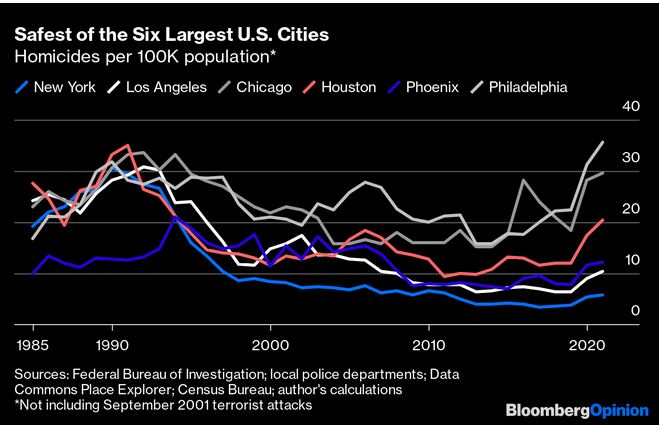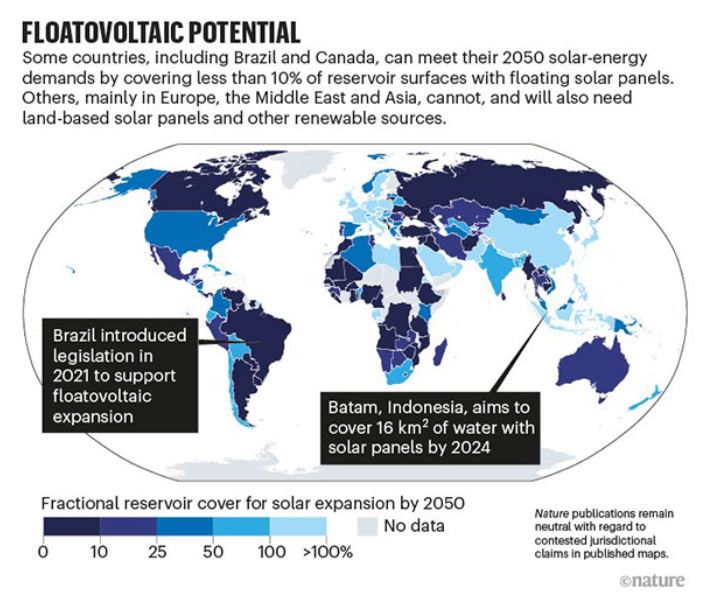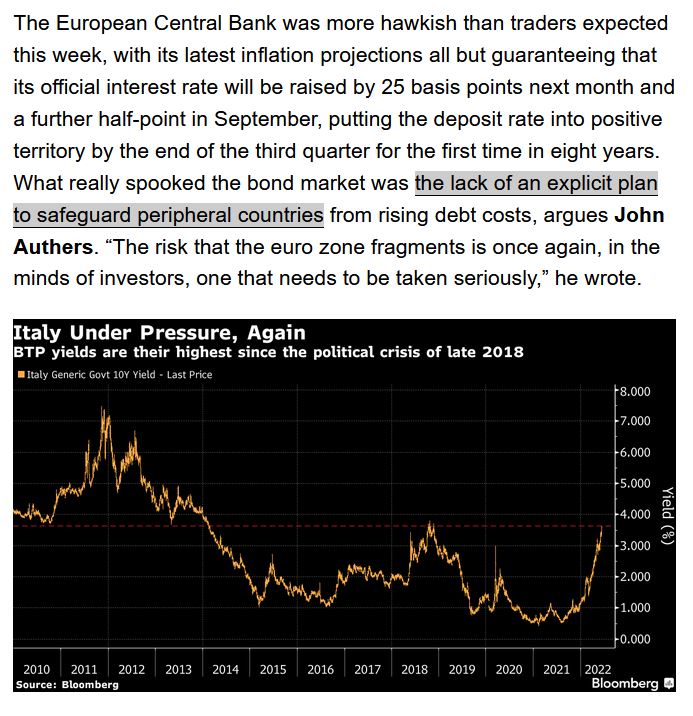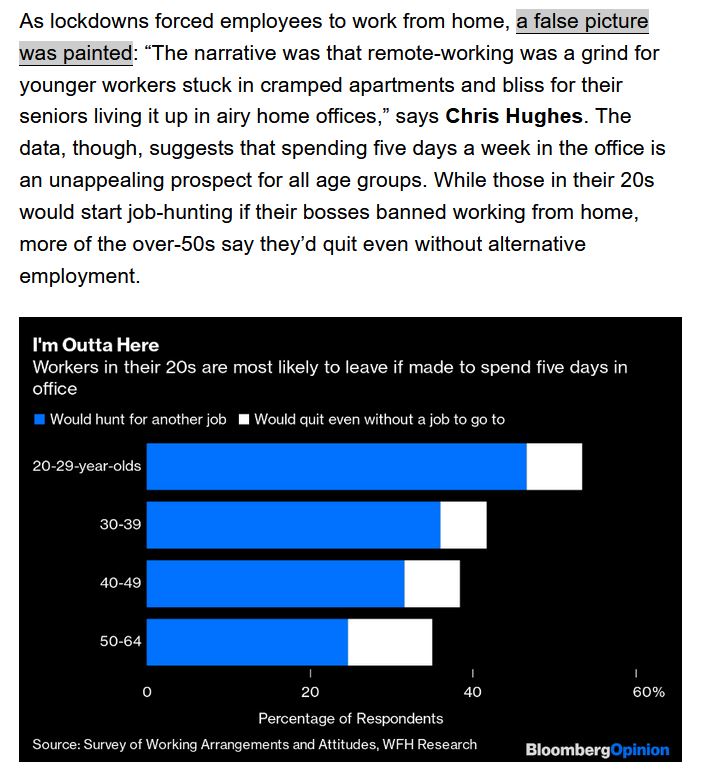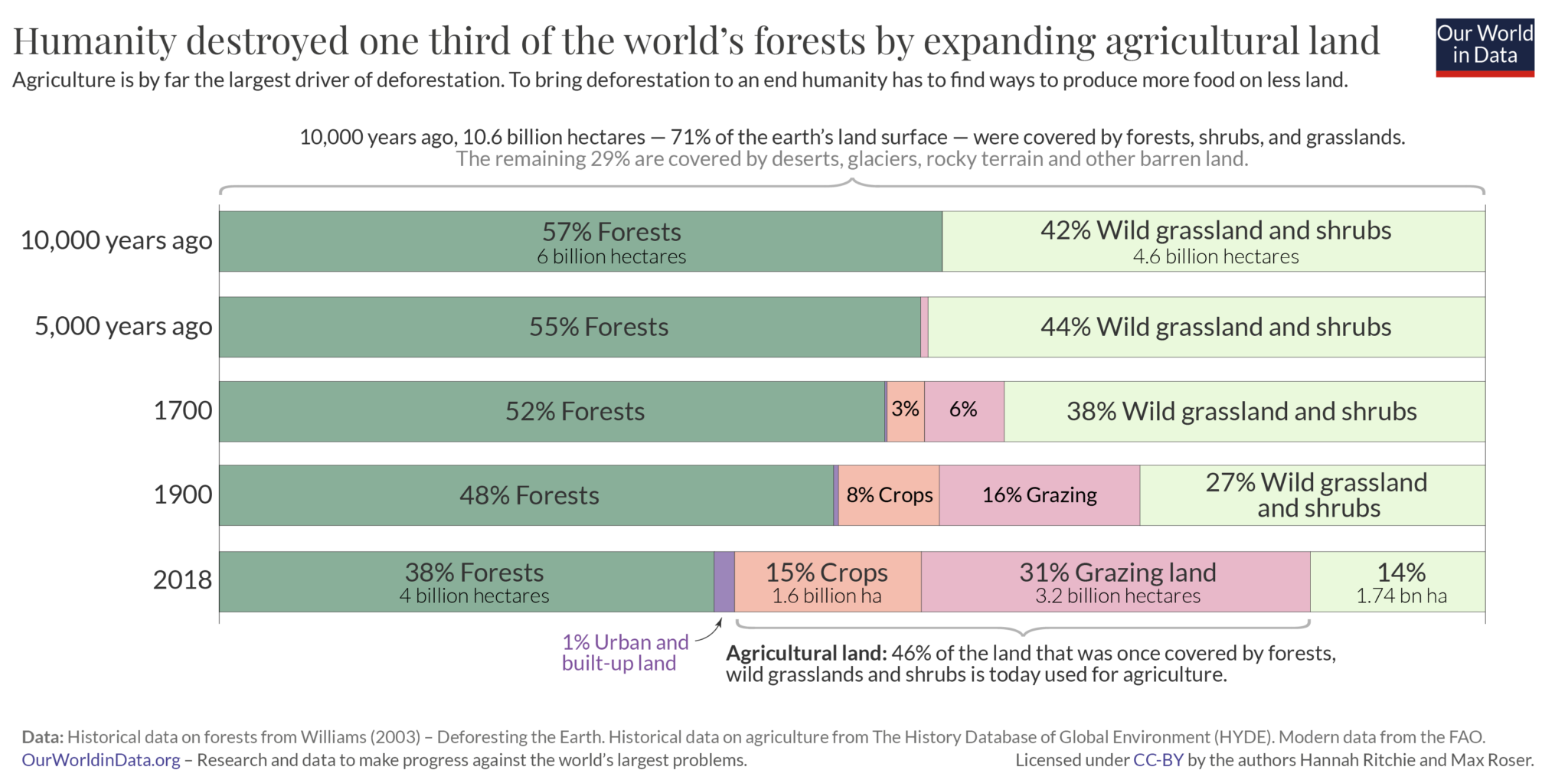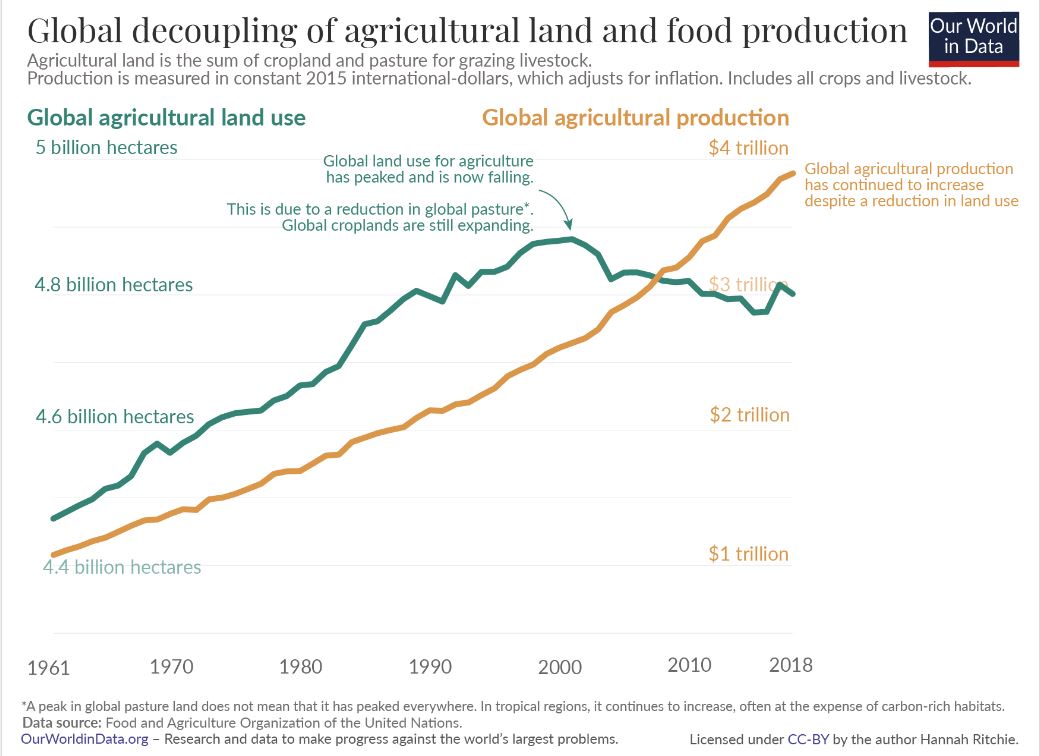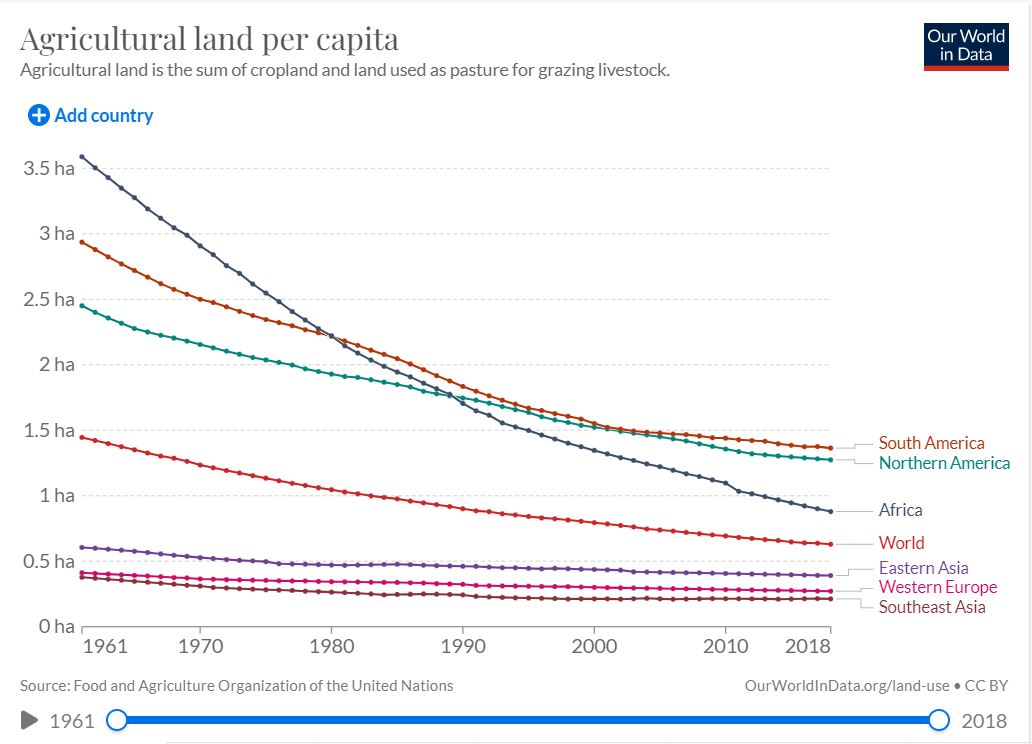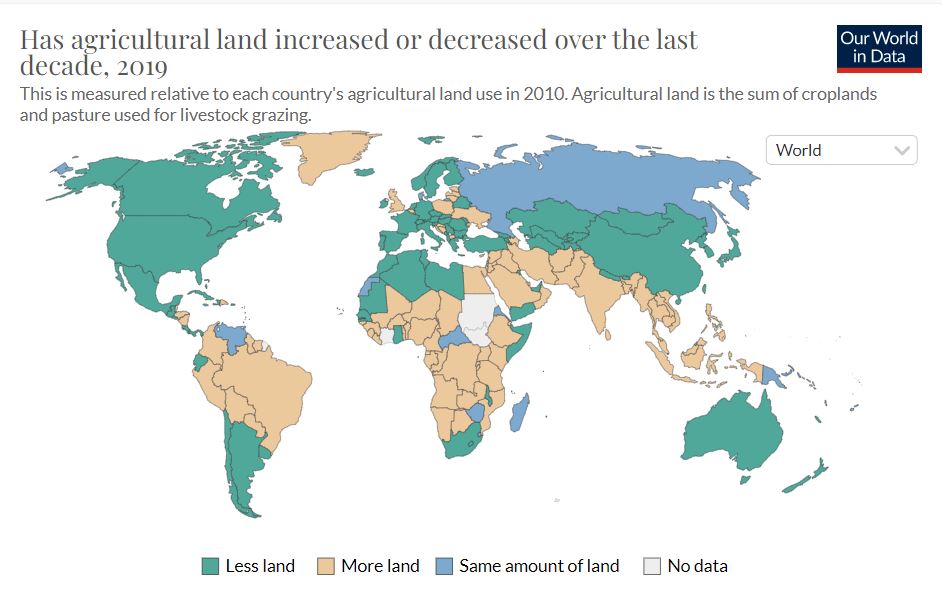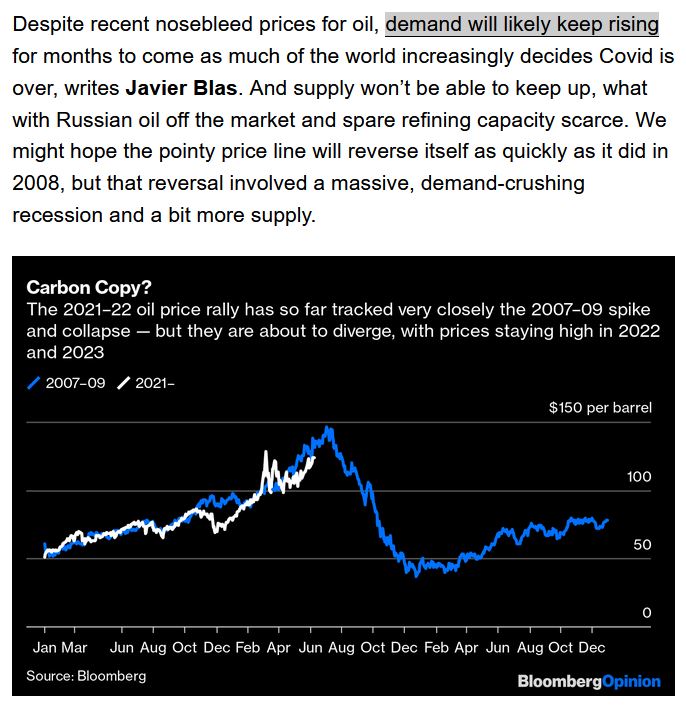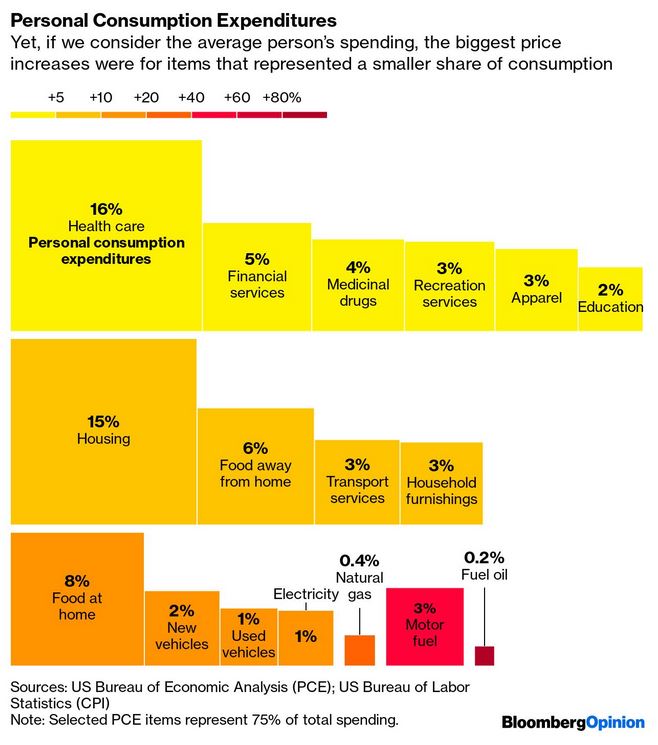|
You
can also view the message online
|
|||||||||||||||||||||||||||||||||||||||||||||||||||||||||||||||||||||||||||||||
 Châtenay-Malabry (FR - 92290), June 20, 2022 EFITA newsletter / 1044 - European Federation for Information Technology in Agriculture, Food and the Environment The informatique-agricole.org site offers you the possibility of subscribing the RSS feeds of its two newsletters See RSS feeds to implement to ensure that you continue to receive this newsletter To unsubscribe this newsletter, please contact me directely: guy.waksman(a)laposte.net if this link Unsubscribe does not work. 
To correspond with me (GW), please use this address: guy.waksman(a)laposte.net To subscribe the efita newsletter (please ask your friends and colleagues to test this link) Efita Newsletters subscription Before computers: horse-drawn thresher, 1881 Russia has ‘strategically lost’ war, says UK defence chief, as Lavrov says Moscow unashamed ‘Russia is not squeaky clean. Russia is what it is’ – Kremlin foreign minister’s response to UN report claiming atrocities in Ukraine. The head of the UK’s armed forces has said Russia has already “strategically lost” the war in Ukraine and is now a “more diminished power”. Admiral Sir Tony Radakin said Russia was suffering heavy losses, running out of troops and advanced missiles and would never be able to take over all of Ukraine. “This is a dreadful mistake by Russia. Russia will never take control of Ukraine,” Tony Radakin told PA Media in an interview published on Friday. The country’s highest-ranking military officer said the Russian president, Vladimir Putin, had lost 25% of Russia’s land power for only “tiny” gains and it would emerge a “more diminished power” while strengthening Nato. “Russia has strategically lost already. Nato is stronger, Finland and Sweden are looking to join,” he said. Radakin said that while Putin may achieve “tactical successes” in the weeks to come, it had come at the expense of a quarter of his country’s army power for “tiny” gains and was running out of troops and hi-tech missiles. “The Russian machine is grinding away, and it’s gaining a couple of – two, three, five – kilometres every day,” the admiral said. “And Russia has vulnerabilities because it’s running out of people, it’s running out of hi-tech missiles. “President Putin has used about 25% of his army’s power to gain a tiny amount of territory and 50,000 people either dead or injured. Russia is failing.” …/… See theguardian.com Weekly newsletters about ICT in Agriculture in English and French Both newsletters have around 14000 subscribers. >>> Last weekly EFITA Newsletters in English (created in 1999) Efita Newsletters >>> Last weekly AFIA Newsletters in French (created more than 20 years ago in 1997) Afia Newsletters >>> Statistics for the last efita newsletter >>> Last issue of the afia newsletter >>> Last available satistics for the afia newsletter 1 The Bell Inn, by Richard H. Hilder (1813-1852) British
FutureFarming.com > Who is John Deere making equipment for? The rhetoric of futurists, large equipment companies, governments and others seems completely out of step with what many can actually afford to spend and risk, says Matt McIntosh. > AGCO adds new autonomous capabilities to Fendt Xaver field robot AGCO incorporates Apex.OS, a software development kit, into its Fendt Xaver in order to add new capabilities to the autonomous field robot. It enables AGCO’s engineering team to integrate several autonomous driving components into the Fendt Xaver, including lidar object detection, collision checking and planning. > Weeding systems: crop.zone gets USD 11 million for serial production of electrical weeding system crop.zone, manufacturer of the volt.fuel Electrical Weeding System, has strengthened its capital base for entering into serial production. > Glove detects chemical residues on food in a few minutes Scientists from the University of São Paulo (USP) have developed a glove for rapid detection of pesticide residues in food, as an alternative to time-consuming laboratory analyses. The gloves are able to perform an analysis in a matter of a few minutes. > Crop spraying: Pyka Pelican on doorstep of getting commercial approval in US The fully autonomous Pelican crop spraying aircraft has now successfully completed the final stage of flight demonstration for commercial approval in the US. > Reasons for optimism in fast-growing drone market Almost every week a report is published about the remarkable growth of the commercial drone market. In one of the latest reports Transparency Market Research revealed that it expects an annual increase of 12.5% from 2021 to 2031. Looking at statements of the major Chinese manufacturers DJI and XAG, we can understand the optimism. > Field robots: Lemken and Krone aim for large-scale perfection with field robots At the end of May, Krone and Lemken showed two autonomous vehicles to the European press. The robots are particularly large. They will be commercially available in three years’ time. An impression. > Crop health: Intelinair launches plant disease alert for 2022 growing season Intelinair's AGMRI platform spots Tar Spot in corn before it happens. The new plant disease alert takes into consideration precipitation, topography, soil type, emergence and plant temperature. According to Intelinair the addition of plant temperature makes a world of difference. > Partner feature: Innovative seeding method increases yields Dairy farmer Michael Richardson recently became aware of the Lemken Azurit. This machine sows the corn using the innovative DeltaRow method, whereby the standing space distribution of the plants in the field ensures better use of resources such as light, air and nutrients, resulting in higher yields. > Food safety: Nano-sensor instantly detects pesticides on fruit Researchers at Karolinska Institutet in Sweden have developed a tiny sensor for detecting pesticides on fruit in just a few minutes. The technique, described as a proof-of-concept in a paper in the journal Advanced Science, uses flame-sprayed nanoparticles made from silver to increase the signal of chemicals. > Expert opinion: Who is John Deere making equipment for? The rhetoric of futurists, large equipment companies, governments and others seems completely out of step with what many can actually afford to spend and risk, says Matt McIntosh. See FutureFarming.com Near Sevenoaks, Kent, by Richard H. Hilder (1813–1852)
AGCO Selects Apex.AI for Autonomous Farming Robots Technical partnership represents the next step in a relationship that began with AGCO’s strategic investment in Apex.AI in December 2021. See precisionag.com Agtech Robotics Firm FarmWise Raised Another $45 Million The Central Californian company says its robots have logged 15,000 commercial hours on vegetable farms. See precisionag.com How did we see the future yesterday?? See the incredible collection developed by Alain Fraval Social Solver Launches Challenge to Improve Technology and Digitize Avocado Production in Peru Social Solver is now looking for digital solutions to increase production, profitability, quality and optimizing inputs. See precisionag.com The Metaverse: The Next Big Thing in Equipment Manufacturing? Sectors like agriculture are poised to be greatly affected by this technology. See precisionag.com Agrotools Finalizes $21 Million Funding Round with a Focus on Expansion and Acquisitions The funding will be utilized to expand business throughout the United States, Latin America and other regions. See precisionag.com Cows Watering by a Cottage among Trees, by Richard H. Hilder (1813-1852), National Trust, Anglesey Abbey
Grow-NY wants to award $3m to agrifoodtech startups focused on the future of food and farming Farmers are on the front lines of climate change as growing seasons and destructive weather events that threaten their crops become increasingly unpredictable. They need tools to cope with and mitigate growing climate challenges. The Grow-NY Food and Agriculture competition seeks to uplift food and agriculture technology innovators around the world and establish New York state as a hub for technologies that support farmers as well as sustain our food supply. Startups can apply until July 1 for the chance of winning the $1 million top prize that Grow-NY will award in November. See agfundernews.com Cows Watering by a Cottage among Trees, by Richard H. Hilder (1813–1852), National Trust, Anglesey Abbey
Clicampo raises $7.5m to digitize trade between Brazil’s farmers and retailers, reduce inequalities, AFN, by Jennifer Marston Brazilian ag marketplace Clicampo has closed a $7.5 million seed round for its digital platform that connects the country’s farmers and food producers directly with retailers and restaurants, removing intermediaries and driving more of the profits back to producers. - Valor Capital Group and MAYA Capital co-led the round. Several angel investors, including Marcelo Abritta (Buser), Rafael Costa (Across Capital), and Luis Cascão (TruePay) participated along with the founding teams of two other Brazilian companies, Agrolend and Pier. - Clicampo will use the seed funding for new hires as well as more product and technology developments that support both rural farming communities and retailers, restaurant changes, and e-groceries in the city. See agfundernews.com A Country Lane with Herdsman, a Cow and Sheep, by Richard H. Hilder (1813-1852), 1National Trust, Anglesey Abbey
2 trends to watch in $1.6bn Agri Fintech startup investment scene, AFN, by guest contributor - Niall Haughey Niall is the co-founder of Graze, an Agri Fintech studio dedicated to developing digital financial services for the food and agriculture sector. He started writing the Agri Fintech newsletter in 2021 to highlight innovative projects globally and share stories from founders. Prior to this Haughey was a consultant for the financial services industry in London, set up and ran a payments business in the UK and Ireland, and worked across Africa developing agricultural finance products for inputs, grain warehouse receipts and equipment. Haughey recently released a new report that revealed $1.6bn of investment in agri fintech startups in 2021 across 93 deals, representing 138% year-over-year growth in deal activity. Here he digs into two more trends from the research.
Agri Fintech in Numbers A deep dive into the funding landscape for Agri Fintech companies between 2016 and 2021. See tograze.com NY safest of the six largest US cities
Floating photovoltaic
McCain launches regenerative agriculture project in South Africa, AFN, by Lucy Ngige McCain Foods, the world’s largest producer of frozen potato products, has unveiled plans for its second “Farm of the Future,” this time in South Africa. The project is part of the company’s drive to cut carbon emissions and tackle the impacts of climate change; it follows its first Farm of the Future that launched in Canada around a year ago. McCain has identified two South African locations totaling 465 hectares of irrigated land and 90 hectares of dryland on which it will grow 125 hectares of potatoes each year for use across the country using regenerative agriculture practices. These techniques, as outlined in McCain’s newly-released regenerative agriculture framework, include ensuring farm resilience, armoring soils — preferably with living plants, enhancing crop and ecosystem diversity, minimizing soil disturbance, reducing agro-chemical impact and optimizing water use as well as integrating organic and livestock elements. Working with 85 growers on this land, the project in South Africa will focus on enhancing productivity, while prioritising soil health, water efficiency, the reduction of agro-chemical inputs, and the introduction and preservation of biodiversity. McCain plans to open three Farms of the Future in different growing regions around the world by 2025. …/… See agfundernews.com The field report: Tom Vilsack on how the USDA can transform the food system, Civil Eats, by Lisa Held, June 2, 2022 We sat down with the Secretary of Agriculture to learn about the agency’s priorities around nutrition security, climate action, and equity. Plus: more news from a busy week at the USDA. Improving the food system may not seem like a top priority at a time when tragedies due to the pandemic, the war in Ukraine, the climate crisis, and gun violence abound. But yesterday morning, Secretary of Agriculture Tom Vilsack kicked off a speech at Georgetown University arguing that, in fact, how the U.S. farms and eats is tied to many of the biggest problems the country faces. “A transformed food system is part of how we as a country become more resilient in the face of these big challenges and threats,” he said, as he outlined the key components of the U.S. Department of Agriculture’s (USDA) new Food System Transformation Framework. Released yesterday, the plan includes a long list of investments—from production to distribution to consumption—that aim to build resilience within supply chains, improve fairness for farmers, make nutritious food more accessible, and increase economic equity for producers and communities that have been historically underserved by the agency. …/… See civileats.com/ Italy and Euro at risk
5 days at the office: No!
The tricky restructuring of global supply chains, The Economist Three years ago The Economist used the term “slowbalisation” to describe the fragile state of international trade and commerce. After the go-go 1990s and 2000s the pace of economic integration stalled in the 2010s, as firms grappled with the aftershocks of a financial crisis, a populist revolt against open borders and President Donald Trump’s trade war. The flow of goods and capital stagnated. Many bosses postponed big decisions on investing abroad: just-in-time gave way to wait-and-see. No one knew if globalisation faced a blip or extinction. Now the waiting is over, as the pandemic and war in Ukraine have triggered a once-in-a-generation reimagining of global capitalism in boardrooms and governments. Everywhere you look, supply chains are being transformed, from the $9trn in inventories, stockpiled as insurance against shortages and inflation, to the fight for workers as global firms shift from China into Vietnam. This new kind of globalisation is about security, not efficiency: it prioritises doing business with people you can rely on, in countries your government is friendly with. It could descend into protectionism, big government and worsening inflation. Alternatively, if firms and politicians show restraint, it could change the world economy for the better, keeping the benefits of openness while improving resilience. After the Berlin Wall fell in 1989, the lodestar of globalisation was efficiency. Companies located production where costs were lowest, while investors deployed capital where returns were highest. Governments aspired to treat firms equally, regardless of their nationality, and to strike trade deals with democracies and autocracies alike. Over two decades this gave rise to dazzlingly sophisticated value chains that account for half of all trade: your car and phone contain components that are better travelled than Phileas Fogg. All this kept prices low for consumers and helped lift 1bn people out of extreme poverty as the emerging world, including China, industrialised. But hyper-efficient globalisation also had problems. Volatile capital flows destabilised financial markets. Many blue-collar workers in rich countries lost out. Recently, two other worries have loomed large. First, some lean supply chains are not as good value as they appear: mostly they keep costs low, but when they break, the bill can be crippling. Today’s bottlenecks have reduced global gdp by at least 1%. Shareholders have been hit as well as consumers: as chip shortages have stalled car production, carmakers’ cashflows have dropped by 80% year on year. Tim Cook, the supply-chain guru who runs Apple, reckons such snafus could reduce sales by up to $8bn, or 10%, this quarter. Covid-19 was a shock, but wars, extreme weather or another virus could easily disrupt supply chains in the next decade. The second problem is that the single-minded pursuit of cost advantage has led to a dependency on autocracies that abuse human rights and use trade as a means of coercion. Hopes that economic integration would lead to reform—what the Germans call “change through trade”—have been dashed: autocracies account for a third of world gdp. Vladimir Putin’s invasion of Ukraine has painfully exposed Europe’s reliance on Russian energy. This week McDonald’s in Moscow, which opened in 1990, restarted under local control. Big Macs are no longer on the menu. Meanwhile, President Xi Jinping’s ideological and unpredictable China has a trade footprint seven times as big as Russia’s—and the world relies on it for a variety of goods from active pharmaceutical ingredients to the processed lithium used in batteries. One indication that companies are shifting from efficiency to resilience is the vast build-up in precautionary inventories: for the biggest 3,000 firms globally these have risen from 6% to 9% of world gdp since 2016. Many firms are adopting dual sourcing and longer-term contracts. The pattern of multinational investment has been inverted: 69% is from local subsidiaries reinvesting locally, rather than parent firms sending capital across borders. This echoes the 1930s, when global firms responded to nationalism by making subsidiaries abroad more self-sufficient. The industries under most pressure are already reinventing their business models, encouraged by governments that from Europe to India are keen on “strategic autonomy”. The car industry is copying Elon Musk’s Tesla by moving towards vertical integration, in which you control everything from nickel mining to chip design. Taiwan’s electronics assemblers have cut their share of assets in China from 50% to 35% since 2017 as clients such as Apple demand diversification. In energy, the West is seeking long-term supply deals from allies rather than relying on spot markets dominated by rivals—one reason it has been cosying up to gas-rich Qatar. Renewables will also make energy markets more regional. The danger is that a reasonable pursuit of security will morph into rampant protectionism, jobs schemes and hundreds of billions of dollars of industrial subsidies. The short-term effect of this would be more volatility and fragmentation that would push prices yet higher: witness President Joe Biden’s consideration of new tariffs on solar panels, which he paused this month in the face of shortages. The long-run inefficiency from indiscriminately replicating supply chains would be enormous. Were you to duplicate a quarter of all multinational activity, the extra annual operating and financial costs involved could exceed 2% of world gdp. >> The trouble with safe spaces .../... See economist.com A Storm Cloud, by Richard H. Hilder (1813-1852), The Bowes Museum
A Bend in the River, by Richard H. Hilder (1813–1852), National Trust, Nunnington Hall
The world has lost one-third of its forest, but an end of deforestation is possible, by by Hannah Ritchie, February 09, 2021 5voir les infographies suivantes / See the following infographics) Over the last 10,000 years the world has lost one-third of its forests. An area twice the size of the United States. Half occurred in the last century. Decrease in forest areas for 10,000 years
Decoupling the extension of agricultural land and the increase in food production
Data explorer on the monkeypox outbreak Monkeypox is a disease caused by infection with the monkeypox virus. Its symptoms include fever, head and muscle aches, and bump-like lesions on the skin; in some cases it can be fatal. Monkeypox is transmitted between people via contact with lesions, body fluids such as respiratory droplets, and contaminated material such as bedding. Beginning in May 2022, cases of monkeypox have been reported in several countries in which it is not normally found, including the US, Canada, Australia, and several European countries. We published a data explorer to track the latest reported data on the 2022 monkeypox outbreak, produced by the Global.health team. Ever less agricultural land to feed ever more people
More agricultural land or less agricultural land? See ourworldindata.org
Millions of children learn only very little. How can the world provide better education to the next generation? For many children, schools do not live up to their promise: in many schools, children learn very little. This is a problem even in rich countries. For instance, by the end of primary school, about 9% of children in high-income countries cannot read with comprehension. But lack of learning tends to be a much larger problem in poorer countries. In this article, we take a broad look at the lack of learning in school: what explains this problem and how we can do better. While the quality of education has improved over time in many countries, there are still large inequalities in learning that mirror—and reinforce—economic inequality.
Unleash the Knowledge Economy: Share data and services, generate valuable insights, build communities ØKP4 protocol is a community-run technology powering many Data Spaces and the KNØW cryptocurrency (coming soon). Join a Data Space that fits your interests. Or create one on your own terms. See okp4.network Wild mammals are making a comeback in Europe thanks to conservation efforts The European bison, the continent's largest herbivore, was once abundant across the region. But over time, deforestation and hunting caused its numbers to decline dramatically. By the early 20th century the European bison had gone completely extinct in the wild, with only tens of individuals surviving in captivity. The bison is no outlier, and many other animals have suffered similarly. But it doesn’t have to be this way—and the bison shows it. The European bison has made an impressive comeback over the last 50 years. Successful conservation efforts have seen their numbers rebound, and Europe is now home to more than 2500 of them. In this article, we look at the change in mammal populations across Europe and find that many species are making a comeback. Once on the brink, iconic animals such as the European bison, Brown bear, and elk are thriving once again. Ending our COVID-19 testing data updates We started building our COVID-19 testing dataset in March 2020 to provide essential context for the data on confirmed cases and deaths, as well as insight into the pandemic and how it spread. Beginning 23 June 2022, we will no longer add new data points to our testing dataset. In the earlier stages of the pandemic, this metric was extremely important; now it is much less insightful than before. There are several reasons for this, including a shift in public health authorities’ focus away from testing and case metrics to other endpoints, such as hospitalizations, deaths, and excess mortality. We will continue to collect and publish data on all of these important other metrics in our COVID Data Explorer. We update this data every day. In this article, you can read more about our testing dataset, our decision to stop updating it, and alternative sources of testing data.
Rooted in healthy soil: Conservation practices deliver economic rewards Thirty years ago, an Iowa farmer was forced by circumstance to seek an alternative way to till his fields. That decision made out of necessity delivered unexpected economic, soil health, and yield rewards for Wayne Fredricks. As a result, Fredericks is a passionate proponent of no-till agriculture. When an early freeze in 1991 hindered his ability to plow his fields, Fredricks turned to no-till by circumstance, leading to a complete shift on his operation. “Our soybeans grew well that summer; the weed control was good; and the yields were good,” he said. “I became an adopter of no-till soybeans overnight.” A colleague at the U.S. Department of Agriculture Agricultural Research Service approached Fredericks with their hypothesis that conservation practices could improve productivity and asked if he would be willing to share his data. He saw this as an opportunity to get expert eyes on his data and accepted. “Looking back at the 18-year study by the USDA Agricultural Research Service of my farm’s data, the biggest revolution was an improvement in water-use efficiency,” he says. “Because my soil health was improving, I was raising more bushels per inch of water as the years progressed. This improvement far exceeded the change in normal trend-line yields, and the key was focusing on organic matter.” .../... See agdaily.com How long and how much? Bringing a biotech crop to market costs $116 million and takes 16.5 years The regulatory phase, the longest duration of the overall process, accounted for almost 40% (37.6%) of the total cost of commercialization and more importantly more than half (51.1%) of the time. This increase in time reflects an increase of almost 140% over the 2008-2012 study and an additional 40 months of lost commercial revenue for product developers. See news.agropages.com Overtime in the agriculture industry: One size can’t fit all, by Tim Durham, June 09, 2022 Overtime in the agriculture sector is a colossal misfire, and a glaring incompatibility if there ever was one for an industry that is anything by 9-to-5. See agdaily.com Does the growing of Bt maize change abundance or ecological function of non-target animals compared to the growing of non-GM maize? A systematic review, by Michael Meissle, Steven E. Naranjo & Jörg Romeis .../... >> Implications for policy Our review provides evidence that Bt maize represents a highly selective pest control technology with relatively few negative consequences on a wide array of taxa associated with maize production, especially when compared with the alternative use of broad-spectrum insecticides for managing Bt-targeted pests. The Bt maize transformation events that have been cultivated commercially worldwide have all gone through regulatory environmental risk assessments that concluded that no unacceptable risks for non-target organisms and biodiversity exist [2, 73, 74]. Our systematic review generally supports these conclusions. >> Implications for research Our results largely agreed with prior meta-analyses focused on or including Bt maize. The robust approach ameliorates many of the shortcomings of prior analyses, such as level of analysis, data-dependence issues, and consideration of internal and external validity. One shortcoming of this current review and all prior ones, however, is the limited availability of appropriate data (in particular raw data) with the consequence that some data had to be estimated (rather than calculated) for the quantitative analyses, while other datasets could not be analyzed at all. Future articles should make full datasets publicly available to foster future meta-analyses and focus on taxonomic groups and geographies that are under-represented in the current database. More research is recommended on experimental plot sizes necessary for a better representation of farm scale conditions for animals with mobile life stages and multiple generations per season. Furthermore, research on the biological relevance of differences in field populations is needed. For example, some evidence suggests small changes in abundance do not impact biological control function in Bt cotton [75]. That is, even if statistical differences in experimental studies and meta-analyses are observed, how are such differences linked to ecosystem functions and can they lead to harm? See environmentalevidencejournal.biomedcentral.com Lessons from Sri Lanka on organic farming, by Sri Lanka Guardian (June 14, 2020 - The changeover to organic farming must be phased and implemented over a longer period of time to ease the pressure on food security. - The key to a successful transition from conventional agriculture to organic farming is recognising the fact that organic farming is synonymous with low yield. See slguardian.org Two similar oil crisis?
Biggest price increases for items that represent a small share of our consumption
US Support for Gay Marriage Despite what hyperbolic headlines might have you believe, the United States continues to grow more socially tolerant. Ten years ago, just 50 percent of Americans thought same-sex marriages should be valid under the law. Today, 71 percent do, up from 70 percent a year ago and 63 percent in 2019.
Air conditioning saves lives According to one study, air conditioning has prevented 18,000 heat-related deaths annually in the U.S. alone. Now, billions of people in tropical regions are on the verge of affording air conditioning — so long as climate regulations don't jack up the price. .../... See humanprogress.org See The Impact You Make: DonorSee is a giving platform where you can give directly to people in need and get a video update showing your impact The traditional foreign aid model is notoriously inefficient, often wasting vast resources on bloated bureaucracies and outsider-led projects that fail to deliver their intended benefits. Gret Glyer, the founder of DonorSee, is implementing an alternative based on market mechanisms, donor feedback, and locally-led initiatives. See Interview See Transcript See donorsee.com Paysanne sur une route en vue d'un village, par Camille Corot, 1796-1875
Reader Request: The Epoch Times' Glyphosate Hysteria Debunked, by Cameron English — May 12, 2022 A reader asked us to examine a recent opinion piece full of spurious claims about the weed killer glyphosate. The story further confirms that newspapers cannot be trusted to faithfully report the facts about pesticide safety. See acsh.org NYC Cancer Trial Delivers ‘Unheard-of' Result: Complete Remission for Everyone (12 patients) Patients with a particular kind of cancer and a particular kind of mutation received a new therapy called dostarlimab and had results not seen in a cancer trial before. See nbcnewyork.com Lasers could cut lifespan of nuclear waste from “a million years to 30 minutes,” says Nobel laureate Gérard Mourou has already won a Nobel for his work with fast laser pulses. See freethink.com Hauteurs de Ville d'Avray, paysans travaillant dans un champ, par Camille Corot, 1796-1875
Short jokes - Peter, do you think I am a bad mother? - Well, my name is Andrew. This is the story of a sandwich walking into a pub… The waitress says: “Sorry we don’t serve food in here”. - Do you know the difference between a hippo and a zippo? - One is really heavy and the other one is a little lighter. The teacher asked: - Tom: Did your mother help you with your homework? - No, she did them all by herself.
The distribution of this efita newsletter is sponsored by vitisphere.com Please, contribute to the content of your efita newsletter, and advertise your events, new publications, new products and new project in this newsletter. Without your support, it will not survive! Contact: Guy WAKSMAN E-mail: guy.waksman(a)laposte.net To read this newsletter on our web site See Efita The archives of this newsletter See Efita Do not miss the Virus Jokes in English and French About the EFITA mailing list You can use the efita moderated list (> 15000 subscribers) to announce any event / product / web site / joke (!) related to IT in agriculture, environment, food industry and rural areas. If you want to subscribe a friend, please fill in his form. If you do not wish to receive our messages, please fill in the following form... |








